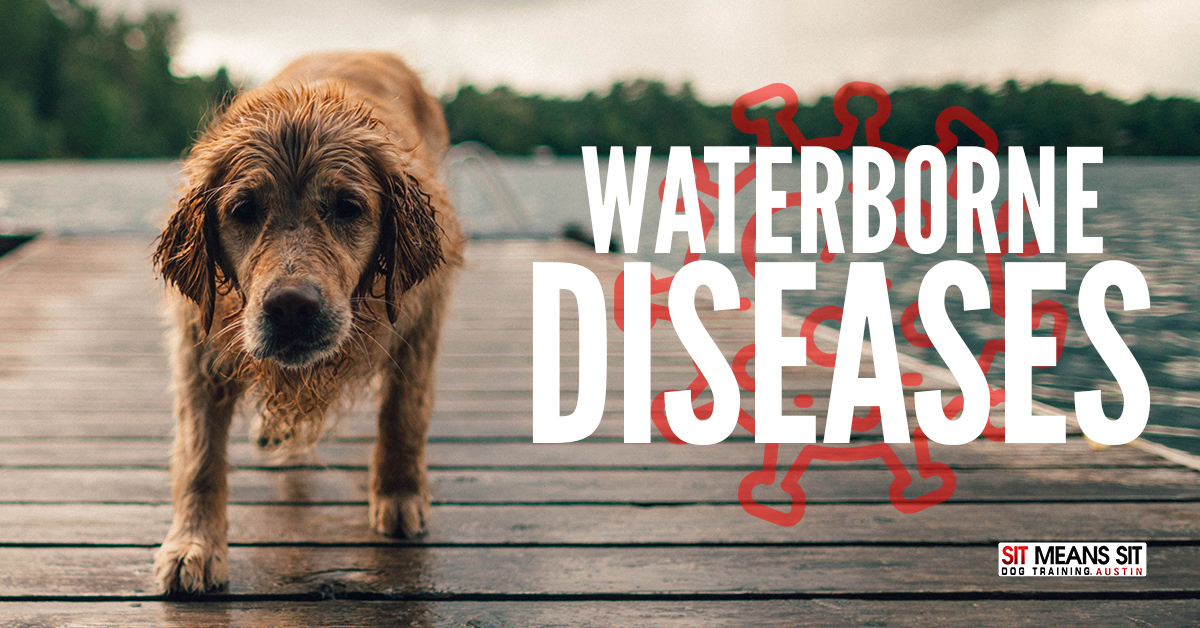
Waterborne Diseases That Are Dangerous For Dogs
With summer in full swing, you may be considering taking your pooch for a dip in one of your local lakes, ponds, streams, or rivers. Before you head out, though, and let your pup wade in the water, there are a few waterborne diseases you should be aware of and how to avoid them.
Giardia
Giardia is a parasite that can cause intestinal infections in not only your furry friend but you as well. However, puppies are more likely to get infected by these parasites than adult dogs. If it’s discovered that your pooch has contracted Giardia, some antibiotics can thankfully get rid of it
Giardia is one of the more common waterborne illnesses out there and can be found all over the world. Typically, though, you’ll find this parasite lurking in backcountry streams, lakes, swimming pools, whirlpools spas, and wells. In most cases, canines catch the disease by drinking the contaminated water or coming in contact with the feces of another animal infected with Giardia.
The best way to avoid your pup getting Giardia is to continually have clean water on hand that they know is available when they need it, as well as keeping your dog away from any other animal’s feces.
Cryptosporidium
As a microscopic intestinal parasite, Cryptosporidium can cause gastrointestinal discomfort, fever, and diarrhea in pups. Dogs catch the disease by drinking contaminated drinking or recreational water.
This is another parasite that is widespread and can be found in just about any area around the world. Developing countries, however, tend to see more cases involving Cryptosporidium because there is typically a higher risk of water contamination.
Once again, bring clean water for Fido to drink and keep them away from dirty pools of water. Prevening your furry friend from drinking from a public water source can also be helpful (like dog bowls outside of stores).
Schistosomiasis
Schistosomiasis is a waterborne illness that is caused by parasitic worms. Your canine could be infected by merely swimming or wading in water that is contaminated.
A large number of cases tend to be found in Texas and Louisiana. The southeastern region of the United States in general, though, tends to have a bulk amount of Schistosomiasis cases.
Living in the southeastern part of the States, you should keep your pooch away from ponds, canals, and other waterways that have limited flow. It’s also important to do your research about a particular body of water before letting your furry friend jump in it. You can typically find this information on government websites that produce reviews and any water alerts or cautions that are active.
Blue-Green Algae (Cyanobacteria)
Blue-Green Algae can change the appearance of a lake or pond to that of green paint. If the wind conditions are right, it will also tend to build up along the shoreline in a lime-like fashion. Blue-Green Algae is produced when stagnant water mixes with the right temperature and amount of sunlight. When these algae bloom, it can produce toxins that can lead to liver and nervous system damage in your canine companion.
You’ll find Cyanobacteria all over the world as it is not specific to one type of climate or region. It’s typically found in lakes, streams, ponds, and brackish bodies of water.
If you notice that the water is foamy or has a thick blue-green-red film overtop it, then it’s best to avoid that area. Luckily, many states also publish algal bloom adversaries online, so with a bit of googling, you should be able to find more information on the body of water before letting your pooch dive in.
Pseudomonas
If your furry friend were to contract the bacteria Pseudomonas, they would typically develop chronic ear infections and skin infections. Incidentally, the bacteria is resistant to many of the antibiotics out there – which can make it difficult for vets to treat a canine infected with Pseudomonas. Other popular symptoms can include: head shaking, ear scratching, discomfort when the ear area is touched, ear inflammation and pain, and discharge from the ear.
Pseudomonas tend to thrive in pools and hot tubs, possibly due to the excessive warmth and moisture it causes the skin, which increases the chances of infection. Because of this, you should avoid letting your dog plat in pools or hot tubs for extended periods. Puppies and senior dogs are especially susceptible to this bacterial infection due to their weaker immune systems.
Staying informed is the best way to keep your canine companion safe. So before heading out to your local body of water – check online for any possible dangerous bacteria or parasites being reported on top of staying alert to your surroundings and Fido’s behavior.
